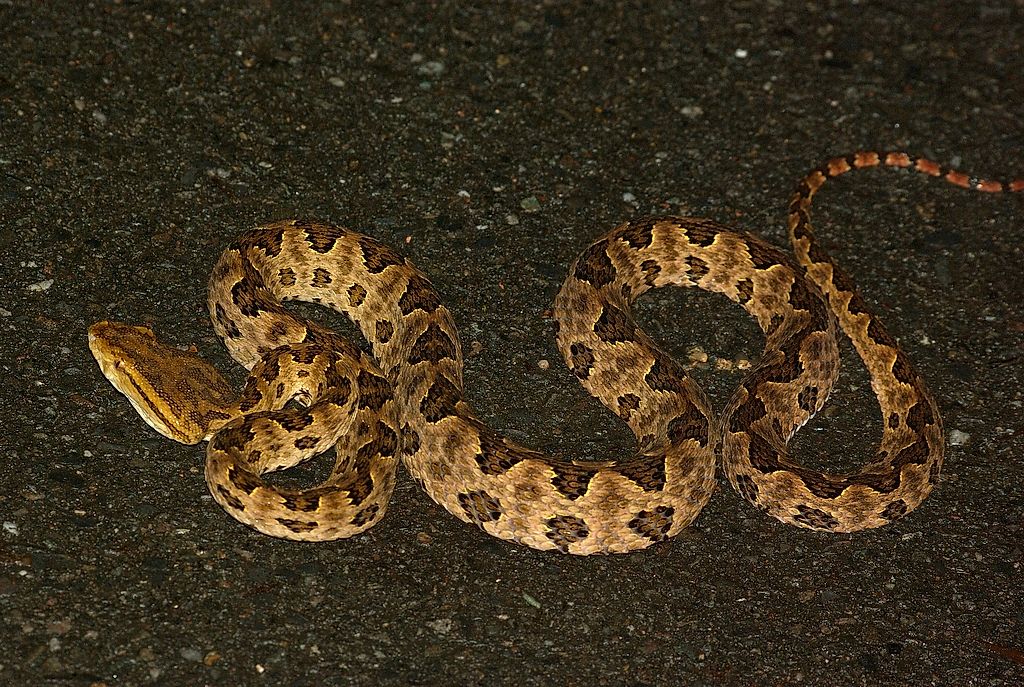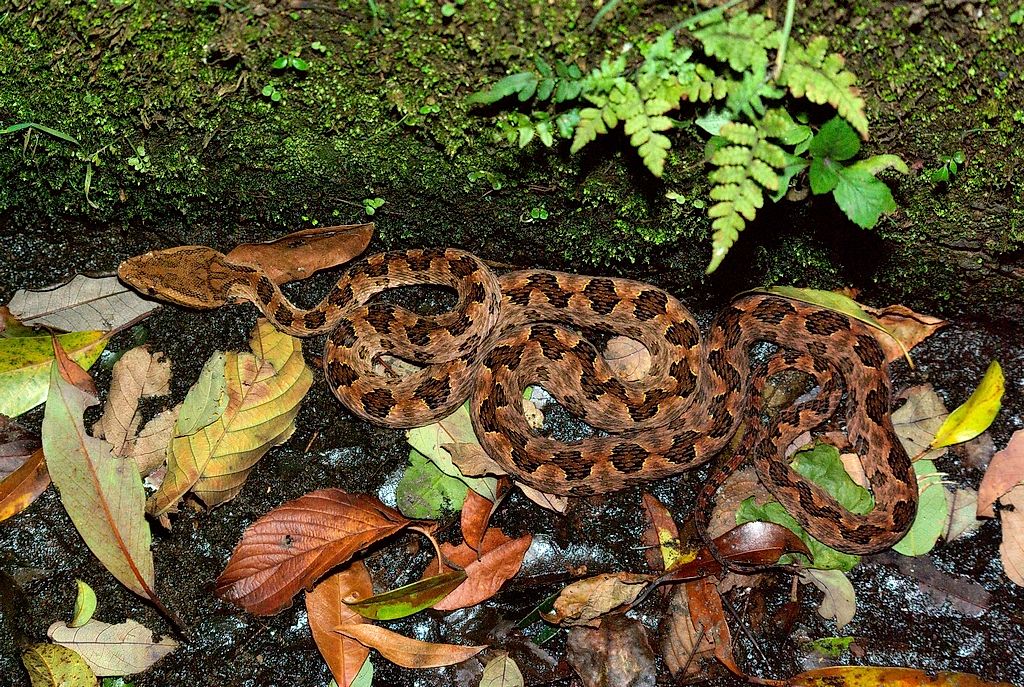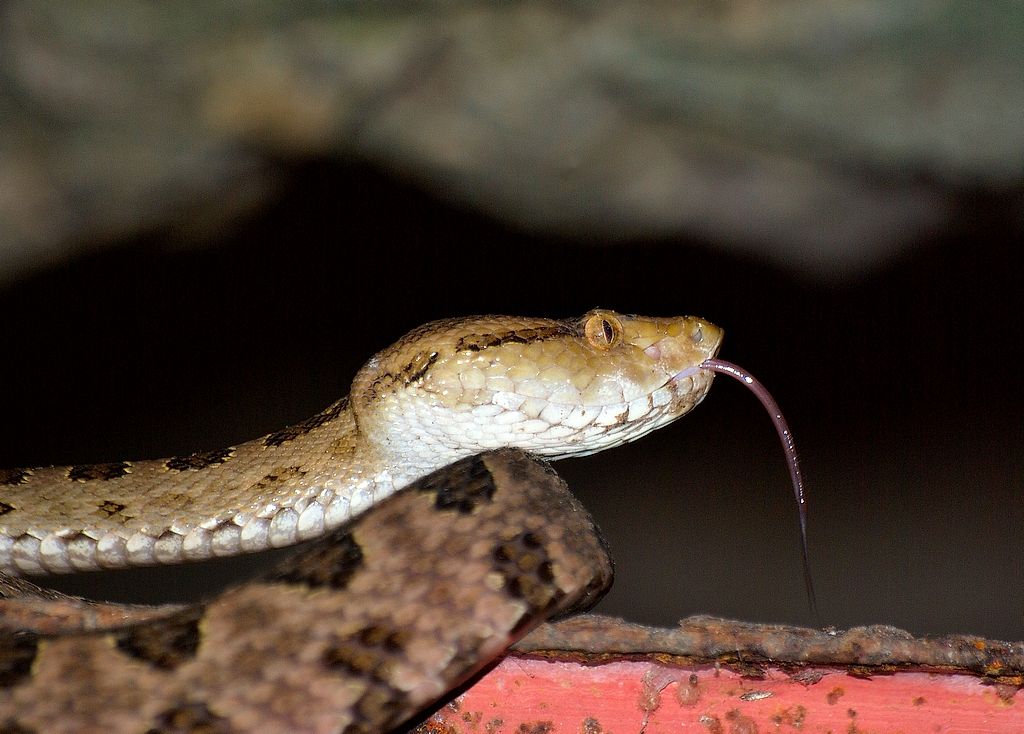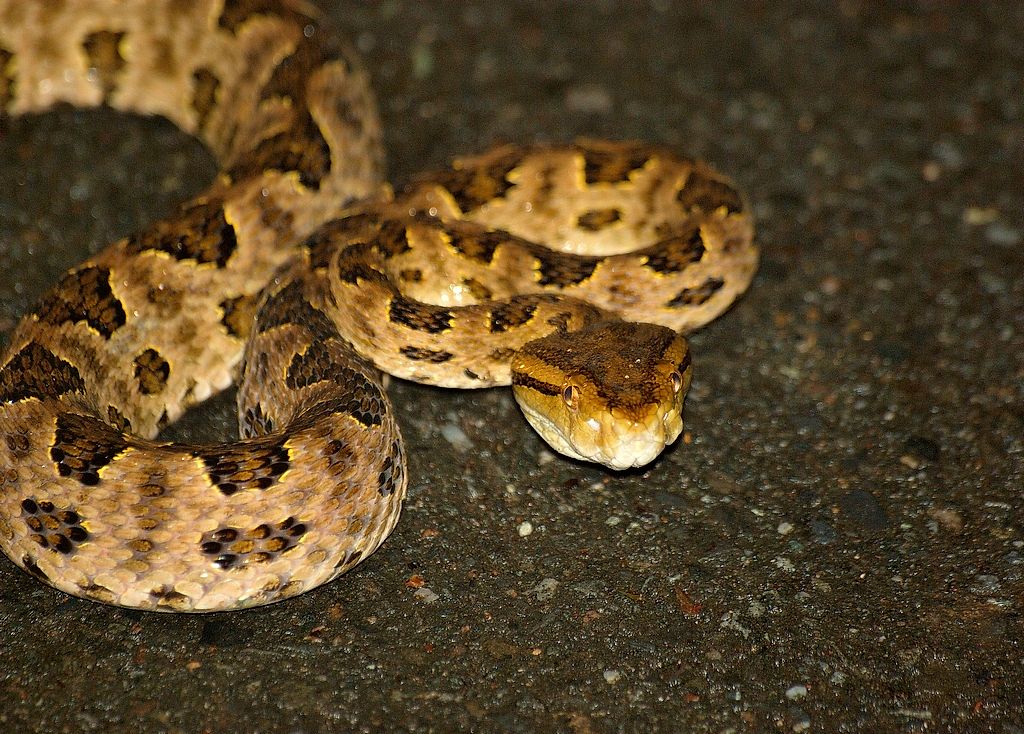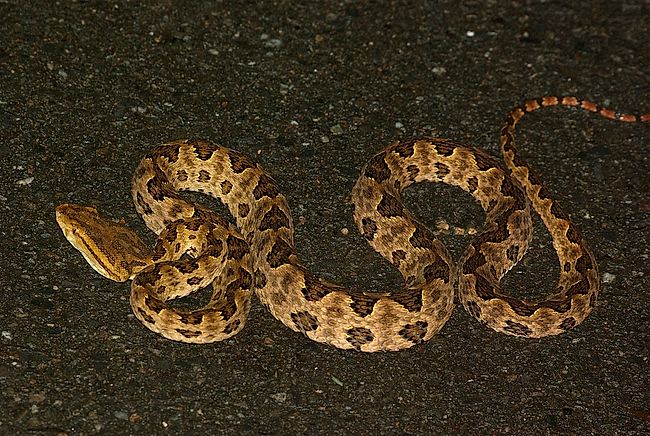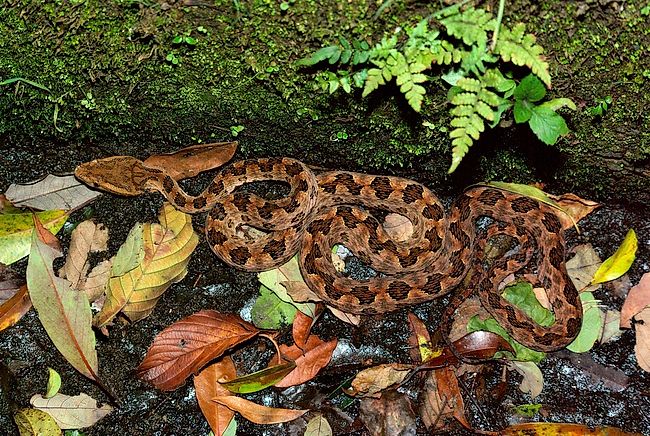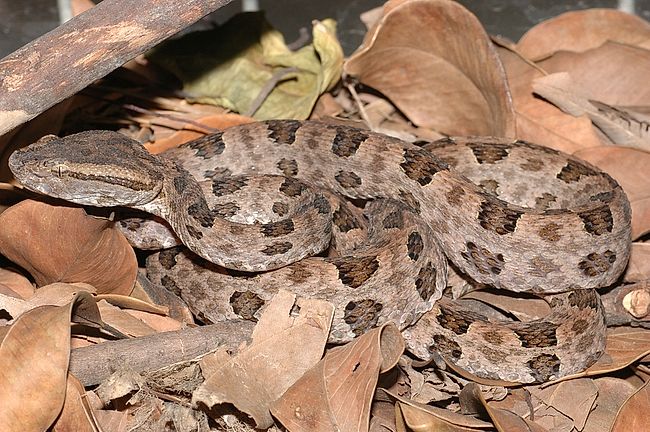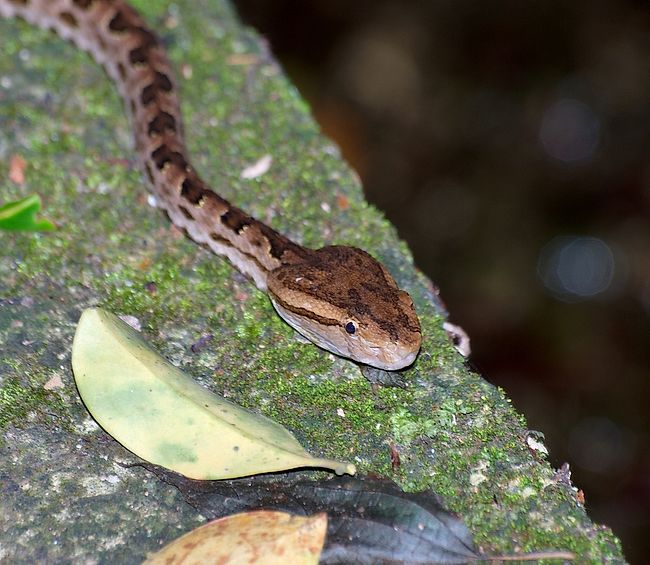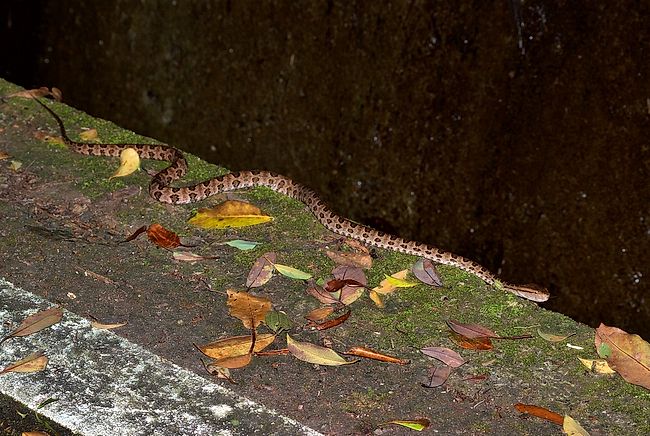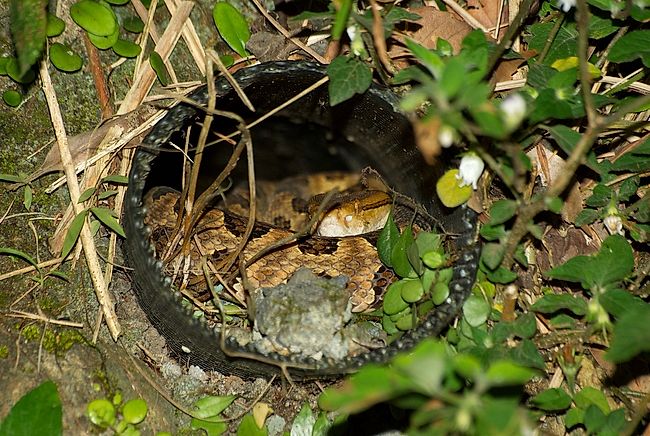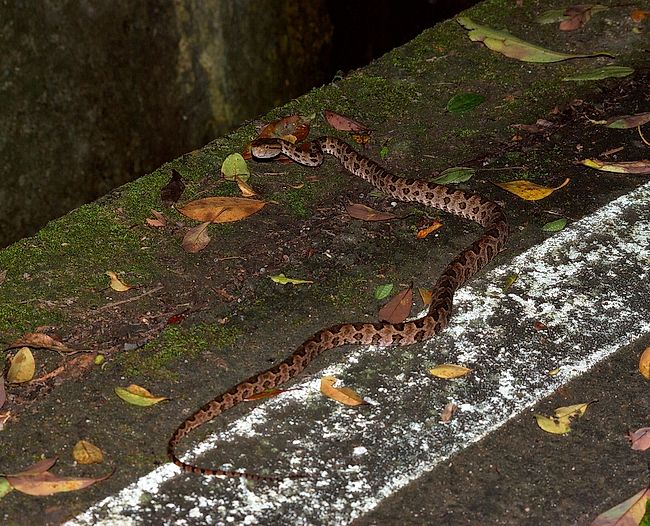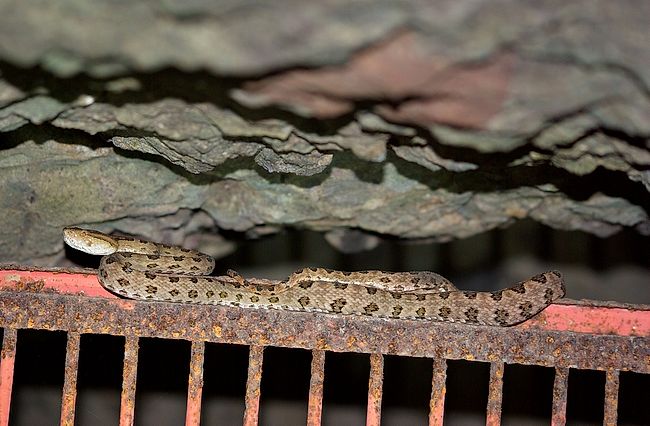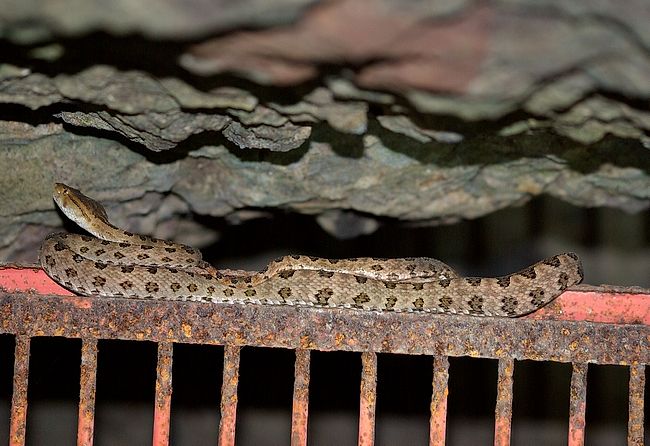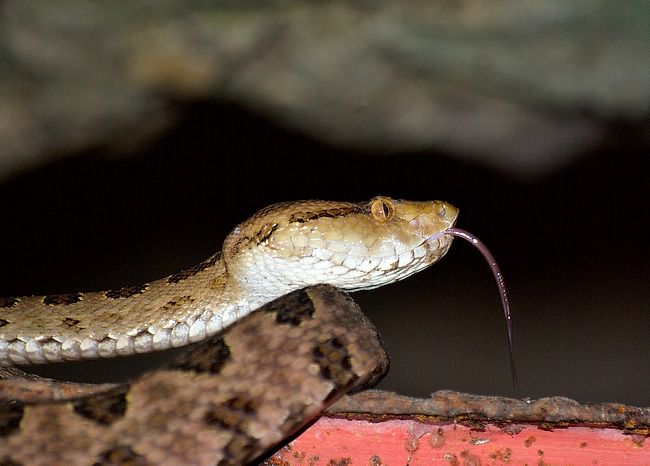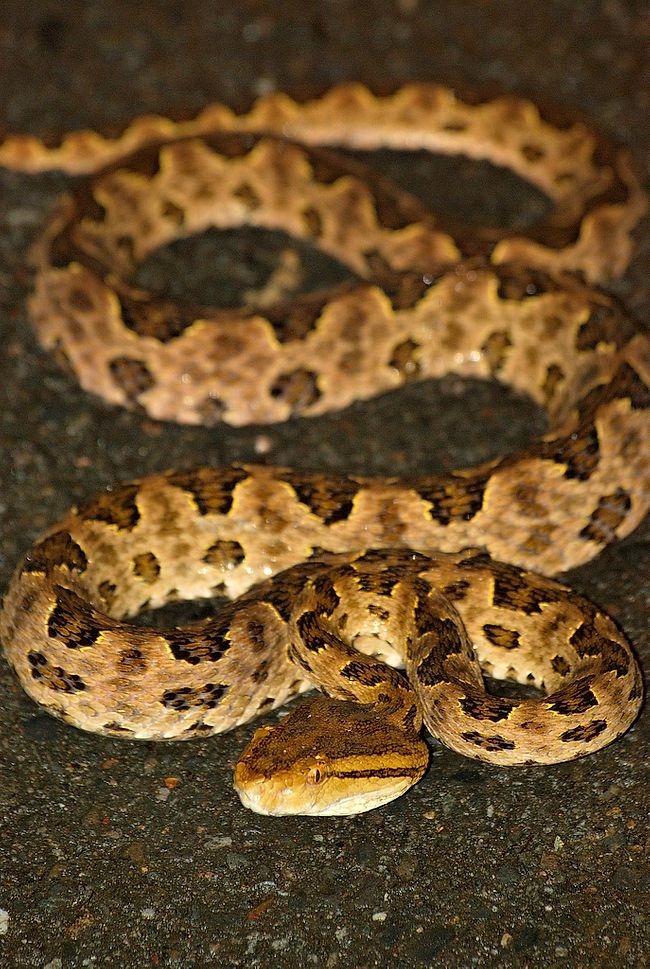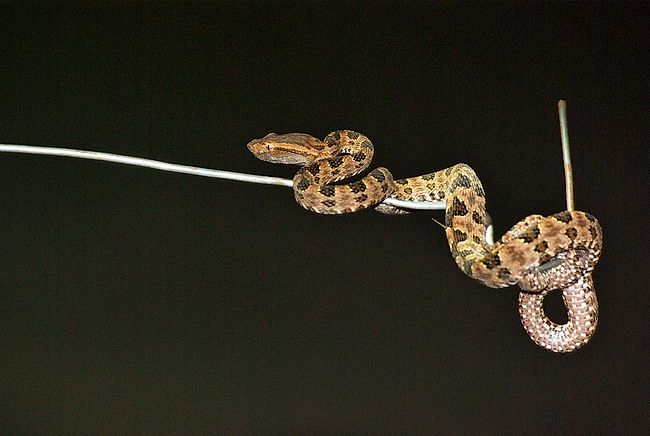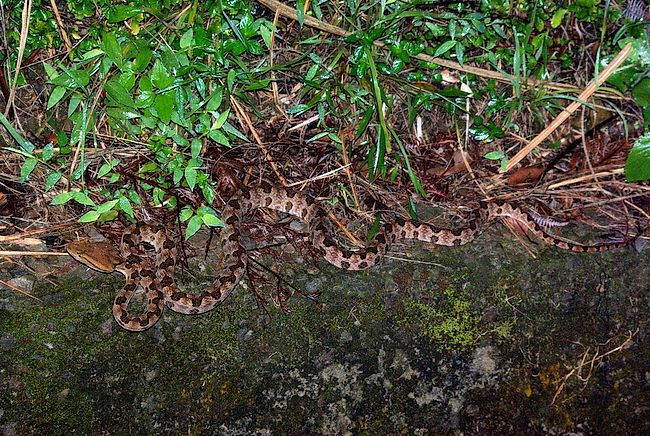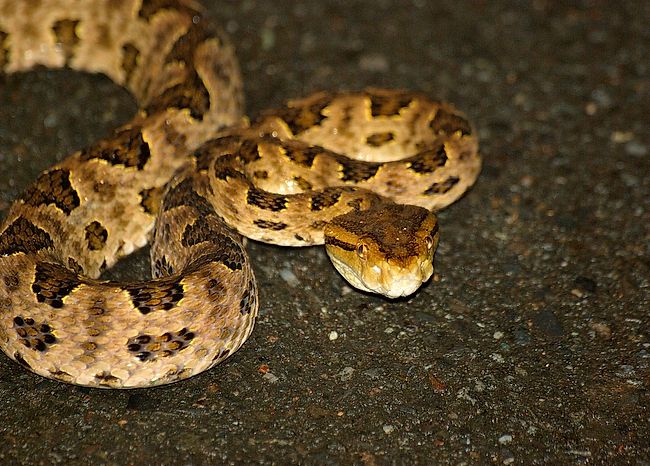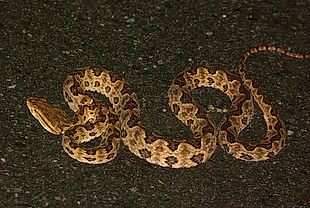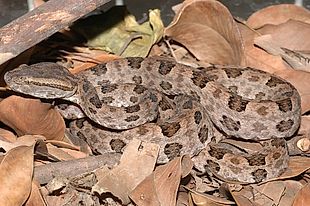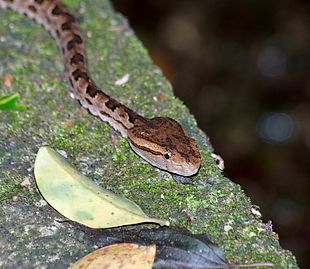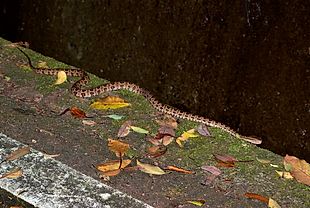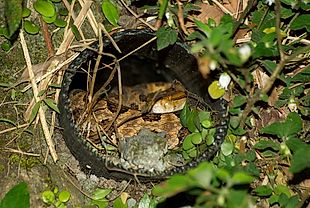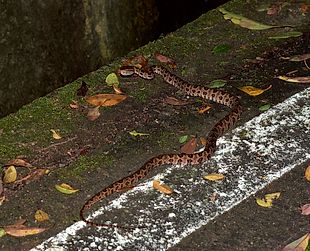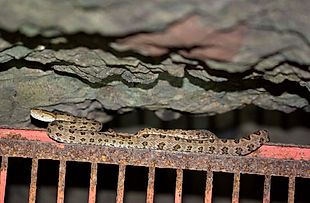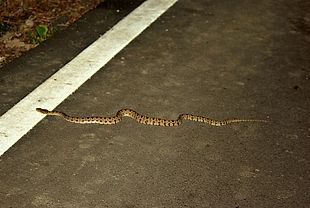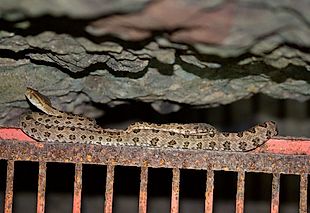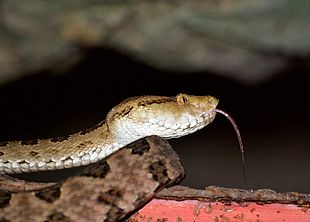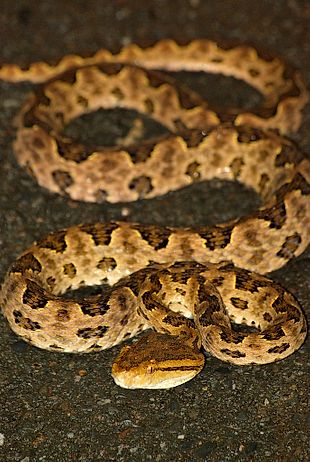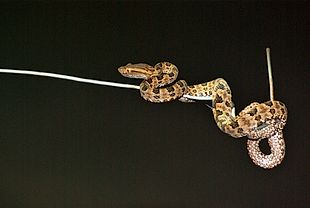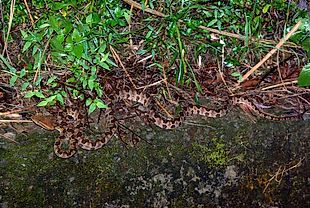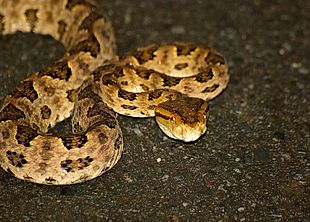Protobothrops mucrosquamatus
Taiwan Habu, Brown Spotted Pitviper, Chinese Habu
龜 殼花 (gui1ke3hua1)
Status: Protected (Cat.III)
HIGHLY VENOMOUS!
Family
Viperidae ; subfamily Crotalinae (Pitvipers)
Max. length
150 cm
Occurrence in Taiwan
Very common throughout Taiwan, up to 1000 meters altitude.
Global Distribution
Bangladesh, India (Assam; Arunachal Pradesh and many other regions), Myanmar, N/C Vietnam, South China (Anhui, Sichuan, Fujian, Guangdong, Guangxi, Guizou, Yunnan, Henan, Hunan, Jiangxi, Shanxi, Shaanxi, Gansu, Zhejiang, Hainan), Taiwan
Description
Medium-sized snake; total length up to 150 cm. There are 18-35 (about 27 at mid-body) rows of scales, which are heavily keeled and rough, except for the first or second scale rows. Head is broad, flattened, distinctly triangular, covered with small or beaded scales, and distinct from the neck; body is moderately stout to slender; tail is medium-sized. There is a large triangular pit between nostril and eye, and the supraocular is well-developed. Eye is medium-sized, high on head; iris is light brown to tan dappled with cream which blends well with color of head. There is a horizontal brown to brown black band of diffuse pigment across middle of eye, which is in line with dark brown band posterior to eye. Pupil is vertically elongated, oval or elliptical, black, surrounded by well-defined band of yellow. Tongue is dark gray to black, with stem lighter than fork tips. Fangs are large (the largest of all venomous snakes in Taiwan), movable, in sheath in anterior part of upper jaw. Upper head is brown to dark brown, with longitudinal patterns of darker brown of varying intensities; the most prominent among them is the dark band extending from eye to corner of mouth. Sides of head are dirty white to tan. Upper body is light brown to brown with many designs or shades of chocolate to brown black; there is a mid-dorsal series of dark designs, and a lateral one on each side of body which tends to be in line with the mid-dorsal one. The dark designs may have narrow margins of cream or light brown. Ventral head is dirty white to diffuse light gray and may be shaded by varying quantities of scattered black pigment. Ventral body is dirty white to light brown, gradually darker toward posterior part of body; it is conspicuously mottled with diffuse gray to diffuse gray brown spots, which may be square and arranged roughly as a checkerboard or form moderately broad irregular longitudinal lines. Anal scale is entire, and subcaudals are paired.
Biology & Ecology
This nocturnal pitviper lives on mountainsides and farmland, often in abandoned houses. It preys on frogs, lizards, birds, mice or bats. Females produce 3-15 eggs of about 3.5x2 cm per clutch in summer and habitually protect them. Hatchlings measure about 22 cm in total length. It is the most fearless of the common venomous snakes in Taiwan and can be aggressive, attacking shadows and moving objects. The bite leaves obvious marks on the victims; the venom contains hemorrhagic toxins, and the wound often swells with bruises and bloody blisters. Especially in the countryside, even the smallest medical facility carries habu antivenom.
Etymology
Protobothrops: Bothrops is a genus of pitvipers found in Central and South America. The generic name derived from the Greek words bothros (pit) and ops (eye or face); an allusion to the heat-sensitive loreal pit organs. Proto means "before" or "early", denoting the relation to the genus Bothrops.
mucrosquamatus: mucro = sharp terminate point or projection; squama = scale, alluding to the keeled scales.
The Chinese name 龜殼花 (gui1ke3hua1) means "turtle shell (龜殼) pattern (花)".
Further Info
